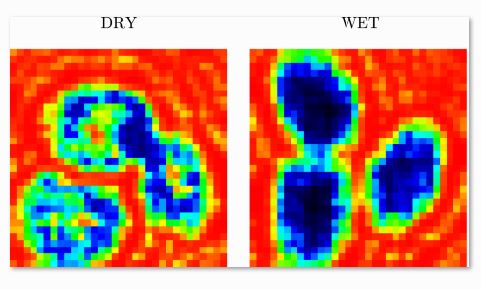Food / agricultural sector targets Terahertz imaging
 Non-destructive testing (NDT) with terahertz imaging technology appears to be ‘revving up the engines’ and acquiring more adepts into its ranks. In particular, applications in food and agricultural sectors seem to be gaining popularity especially quickly. That stand to reason, because the absence of ionizing radiation is of utmost importance for these fields, dealing with bio safety! This is why these applications try to keep pace with modern trends aimed at realizing great potential that our THz technology.
Non-destructive testing (NDT) with terahertz imaging technology appears to be ‘revving up the engines’ and acquiring more adepts into its ranks. In particular, applications in food and agricultural sectors seem to be gaining popularity especially quickly. That stand to reason, because the absence of ionizing radiation is of utmost importance for these fields, dealing with bio safety! This is why these applications try to keep pace with modern trends aimed at realizing great potential that our THz technology.
Many customers keep asking us questions about various food products, and whether THz imaging can be helpful with them or not. Of course, each product is unique and we cannot know about all of them. But once in a while we conduct some tests with some of them and thereby reduce the area of unknown.
 For instance, recently we checked fried and salted pistachios, which revealed to be fairly transparent in THz spectrum. We are not surprised, because nuts are known to contain a lot of oil, which does not absorb THz rays. As with many objects, the edges of pistachios appear to be dimmed and are not transparent (due to big effective thickness), but the bulk of the nut (a few pixels) proved to be transparent.
For instance, recently we checked fried and salted pistachios, which revealed to be fairly transparent in THz spectrum. We are not surprised, because nuts are known to contain a lot of oil, which does not absorb THz rays. As with many objects, the edges of pistachios appear to be dimmed and are not transparent (due to big effective thickness), but the bulk of the nut (a few pixels) proved to be transparent.
Our expert have soaked a few pistachios in water and them compared THz images with a those of dry nuts. The picture to the left vividly shows the difference between wet pistachios and regular ones. This proves that our terahertz imaging system can successfully be used to segregate wet products from dry ones and detect wet areas inside of food products, which are supposed to be dry.
However, we have to admit that it did not help us achieve a success with detecting foreign objects in pistachios (like worms, cancers, warm holes etc). The hitch is that pistachio is not big enough. Due to inadequate imaging resolution of our THz imaging cameras our THz system failed to detect an emulated worm, which are not likely to exceed the size of 3mm in width. This means that we will hardly be able to see a small worm (because they are not likely to be thicker than 2 -3 mm in diameter.)
Our imaging resolution is determined by the pixel size and the wave length ≈ 3mm at 100 GHz. Well, a negative result also represents s bit of knowledge that expands our horizons!